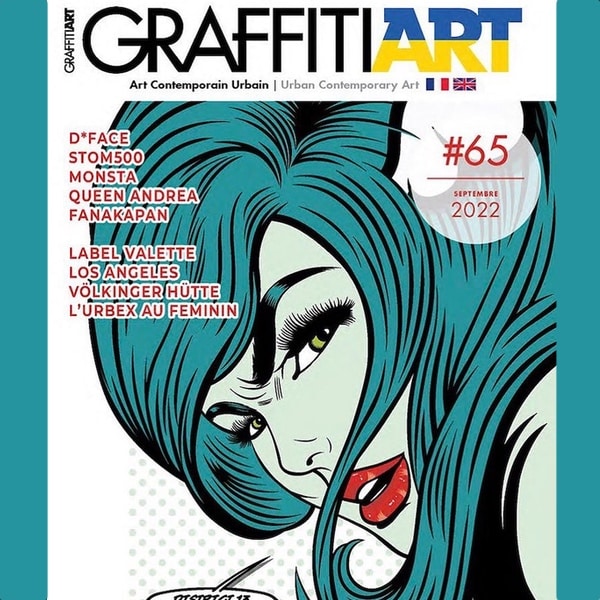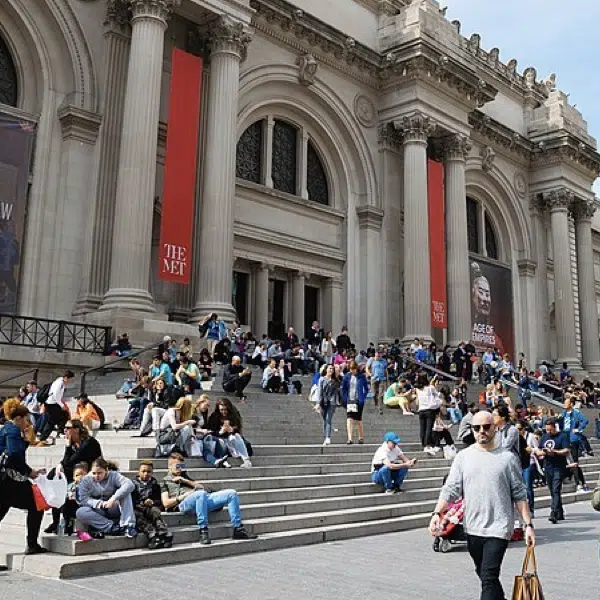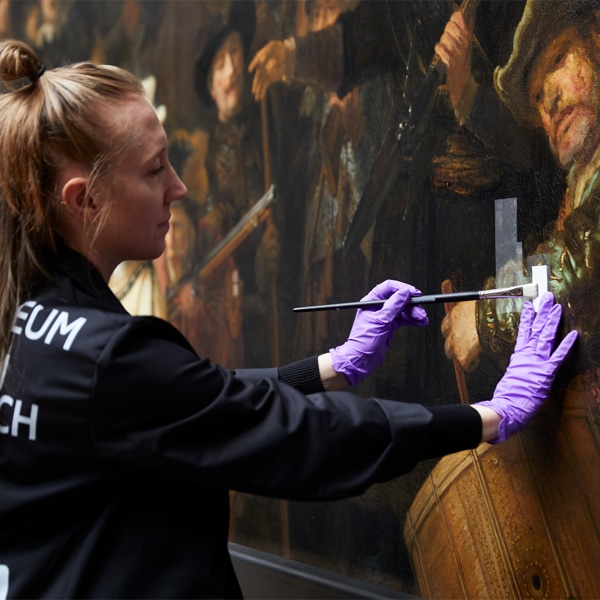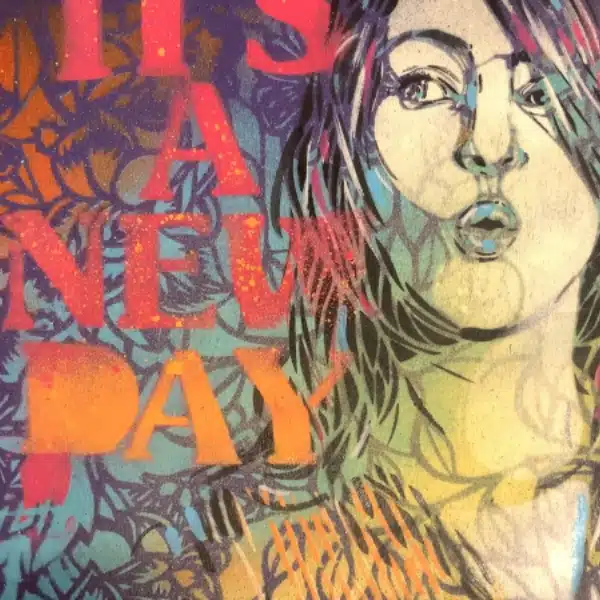View this post on Instagram
Artist Kara Walker is one of today’s most celebrated, internationally recognized American artists. She explores African American racial identity by creating works inspired by the pre-Civil War American South. Walker is best known for her use of the Victorian-era paper cut-outs, which she uses to create room-sized tableaux. In reviving the 18th-century technique, Walker tells shocking historic narratives of slavery and ethnic stereotypes. She says, “My work has always been a time machine looking backwards across decades and centuries to arrive at some understanding of my ‘place’ in the contemporary moment.”
Walker’s work most often depicts disturbing scenes of violence and oppression, which she hopes will trigger uncomfortable feelings within the viewer. “I didn’t want a completely passive viewer,” she says. “I wanted to make work where the viewer wouldn’t walk away; he would either giggle nervously, get pulled into history, into fiction, into something totally demeaning and possibly very beautiful.”
Although Walker is best known for her silhouettes, she also makes prints, paintings, drawings, sculptures, and installations. Read on to discover five of Walker’s most famous works.
Here are five Kara Walker artworks you should know.
Gone: An Historical Romance of a Civil War as it Occurred b'tween the Dusky Thighs of One Young Negress and Her Heart, 1994
View this post on Instagram
This epic wall installation from 1994 was Walker’s first exhibition in New York. The artist debuted her signature medium: black cut-out silhouettes of figures in 19th-century costume, arranged on a white wall. The work’s elaborate title makes a number of references. Gone is a nod to Margaret Mitchell's 1936 novel Gone with the Wind, set during the American Civil War. Walker also references a passage in Thomas Dixon, Jr.'s The Clansman (a primary Ku Klux Klan text) devoted to the manipulative power of the “tawny negress.”
The form of the tableau appears to tell a tale of storybook romance, indicated by the two loved-up figures to the left. However, a closer look at the other characters reveals graphic depictions of sex and violence. Describing her thoughts when she made the piece, Walker says, “The history of America is built on this inequality…The gross, brutal manhandling of one group of people, dominant with one kind of skin color and one kind of perception of themselves, versus another group of people with a different kind of skin color and a different social standing. And the assumption would be that, well, times changed and we've moved on. But this is the underlying mythology… And we buy into it. I mean, whiteness is just as artificial a construct as blackness is.”
Darkytown Rebellion, 2001
View this post on Instagram
After making several cut-out works in black and white, Walker began experimenting with light in the early 2000s. In Darkytown Rebellion, she projected colored light over her silhouetted figures, accentuating the terrifying aspects of the scene. The light even allowed the viewers’ shadows to interact with Walker’s cast of cut-out characters. By merging black and white with color, Walker links the past to the present. She invites viewers to contemplate how America’s history of systemic racism continues to impact and define the country’s culture today.
A Subtlety, or the Marvelous Sugar Baby, 2014
View this post on Instagram
Commissioned by public arts organization Creative Time, this is Walker’s largest piece to date. The full title of the work is: A Subtlety, or the Marvelous Sugar Baby an Homage to the unpaid and overworked Artisans who have refined our Sweet tastes from the cane fields to the Kitchens of the New World on the Occasion of the demolition of the Domino Sugar Refining Plant.
Walker made a gigantic, sugar-coated, sphinx-like sculpture of a woman inside Brooklyn's now-demolished Domino Sugar Factory. The artist produced dozens of drawings and scaled-down models of the piece, before a team of sculptors and confectionary experts spent two months building the final design. The incredible installation was made from 330 styrofoam blocks and 40 tons of sugar.
As a response to the building’s history, the giant work represents a racist stereotype of the “mammy.” Sculptures of young Black boys—made of molasses and resin—surrounded her, but slowly melted away over the course of the exhibition. Raw sugar is brown, and until the 19th century, white sugar was made by slaves who bleached it. The process was dangerous and often resulted in the loss of some workers’ limbs, and even their lives. Walker’s powerful, site-specific piece commemorates the undocumented experiences of working class people from this point in history and calls attention to racial inequality.
“The Domino Sugar Factory is doing a large part of the work,” says Walker of the piece. “[I wanted] to make a piece that would complement it, echo it, and hopefully contain these assorted meanings about imperialism, about slavery, about the slave trade that traded sugar for bodies and bodies for sugar.”
Resurrection Story with Patrons, 2017
View this post on Instagram
Walker’s Resurrection Story with Patrons is a three-part painting (or triptych). It references the artist’s 2016 residency at the American Academy in Rome. While in Italy, she saw numerous examples of Renaissance and Baroque art. The form and imagery of the etching mimics an altarpiece, a traditional work of art used to decorate the altar of Christian churches. Altarpieces are usually reserved to tell biblical tales, but Walker reinterprets the art form to create a narrative of American history and African American identity.
The central image (shown here) depicts a gigantic sculpture of the torso of a naked Black woman being raised by several Black figures. The piece references the forced labor of slaves in 19th-century America, but it also illustrates an African port, on the other side of the transatlantic slave trade.
Two African American figures—male and female—frame the center panel on the left and the right. Rendered in white against a dark background, Walker is able to reveal more detail than her previous silhouettes. The figures have accentuated features, such as prominent brows and enlarged lips and noses. The male figure’s formal clothing indicates that they are from the Antebellum period, while the woman is barely dressed. In the three-panel work, Walker juxtaposes the silhouette's beauty with scenes of violence and exploitation. The piece also highlights the connection between the oppressed slaves and the figures that profited from them.
Fons Americanus, 2019
View this post on Instagram
Created for Tate Modern’s 2019 Hyundai commission, Fons Americanus is a large-scale public sculpture in the form of a four-tiered water fountain. It’s inspired by the Victoria Memorial that sits in front of Buckingham Palace, London. However, rather than celebrate the British Empire, Walker’s piece presents a narrative of power in the histories of Africa, America, and Europe.
Fons Americanus measures half the size of the Victoria Memorial, and instead of white marble, Walker used sustainable materials, such as cork, soft wood, and metal to create her 42-foot-tall (13-meter-high) fountain. Presenting the brutality of slavery juxtaposed with a light-hearted setting of a fountain, it features a number of figurative elements.
The fountain’s centerpiece references an 1801 propaganda artwork called The Voyage of the Sable Venus from Angola to the West Indies. The figure spreads her arms towards the sky, but her throat is cut and water spurts from it like blood. Below Sable Venus are two male figures; one representing a sea captain, and the other symbolizing a once-powerful slave owner. They both look down to base of the fountain, where the water is filled with drowning slaves and sharks. Water is perhaps the most important element of the piece, as it represents the oceans that slaves were forcibly transported across when they were traded.
Kara Walker: Website | Instagram | Twitter
Related Articles:
8 Groundbreaking African American Artists to Celebrate This Black History Month
Augusta Savage: How a Black Art Teacher and Sculptor Helped Shape the Harlem Renaissance
Henry Ossawa Tanner: The Life and Work of a 19th-Century Black Artist
Painting by Civil War-Era Black Artist Is Presented as Smithsonian’s Inaugural Gift






















































































